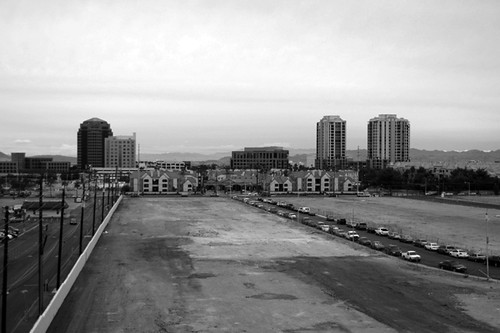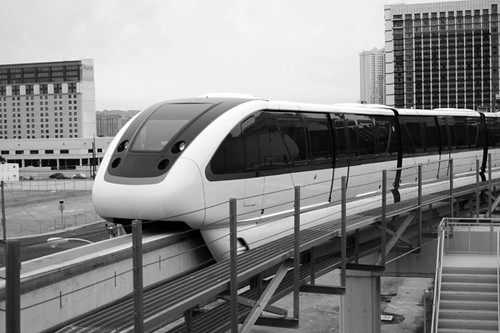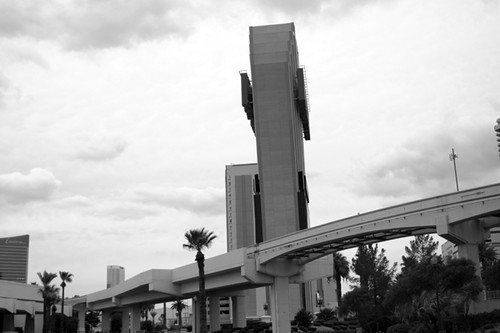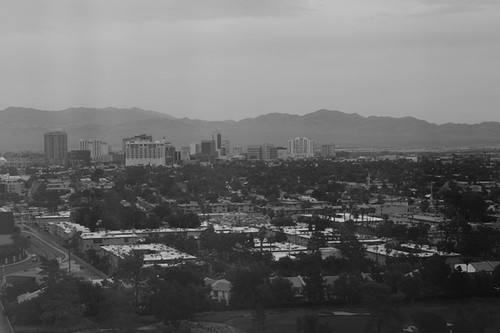Though I've lived in many different places over the course of my life, they have been mostly in Europe. Within the US my travels have been limited to the East Coast, and my trip to Las Vegas for Interbike was the first time I'd ventured west of Pennsylvania. Popular culture is saturated with images of Vegas, and I thought I knew pretty well what to expect: casinos, bright lights, neon signs, drunken merrymaking... If in the right kind of mood, I could see the kitsch appeal. But what I did not expect were unfinished construction projects, miles of empty parking lots, and a funny sense of being in the middle of a Broadway production that had its funding cancelled before the set could be completed. Maybe I wasn't supposed to arrive during the daytime (or be awake during daylight at all while there?), but the Vegas I saw looked not unlike the outer boroughs of former Soviet bloc cities, with their faded concrete high-rises and muddy vacant lots.
Equally fascinating was that Las Vegas seemed to be intentionally "anti-pedestrian" in design. I have no background in city planning, so it's hard to explain exactly what I mean. But with the exception of the smallish main strip - which is indeed walkable and feels like Disneyworld on crack - the city is made of these self-contained complexes accessible either by car or Monorail (they really try to push the Monorail, but it was mostly empty every time I used it).
Even in the city center, the roads are multi-lane and highway-like. Sometimes there are sidewalks, but they are lined with tall guard rails and there are no provisions for crossing the street except maybe every mile or so. The hotel I stayed at was technically around the corner from the convention center where Interbike was held, yet it was recommended I take the Monorail to it. Well, one night I had this crazy idea to walk. I could clearly see the hotel right in front of me - how bad could it be? It took about an hour and a half, because there was no way to walk to it in anything resembling a straight line. I had to walk around stadium-sized empty lots surrounded with chainlink fences, and when I tried to take shortcuts through hotels, I was forced to navigate along winding paths designed to maximise my exposure to slot machines. It was surreal. As for riding a bike, I remember someone posting a ridiculous statistic on twitter, claiming that 100% of Las Vegas residents who cycle report being hit by a car at least once. Having now been there, I no longer find it implausible.
While of course I've known that places like Las Vegas exist, I guess I've done my best to avoid them - choosing to live in areas that are walkable, which for me equates with livable. Being faced with the reality of what a city like this is actually like was jarring. I know that places like Boston comprise only a small fraction of the American urban landscape, while a model similar to Las Vegas is more common. I know it, but I try not to think about it, because the realisation fills me with a dread that I don't know how to overcome.
As I write this, I am waiting to board a plane to yet another city: Vienna. Design-wise, it is pretty much the polar opposite of the Las Vegas. And the public transportation and cycling infrastructure put even Boston to shame. It is fascinating that such contrasts are possible in the way human beings create living spaces. What motivates the various designs? And what to do when the original motive is no longer relevant, or was a mistake, or turns out to be harmful to the population? Huge questions, I know. But sometimes you have to ask.









0 comments:
Post a Comment